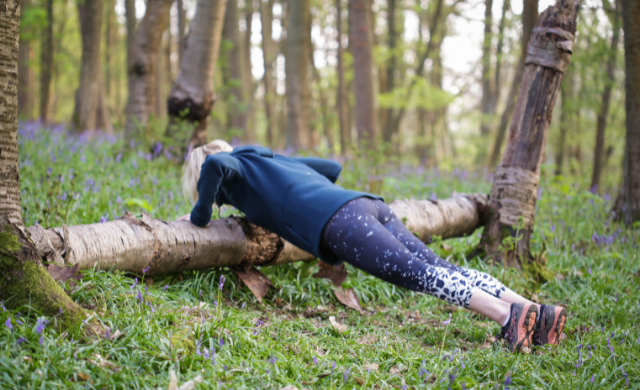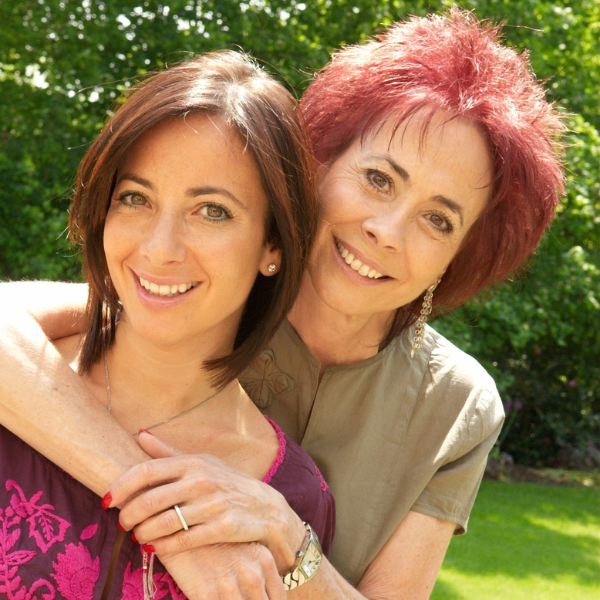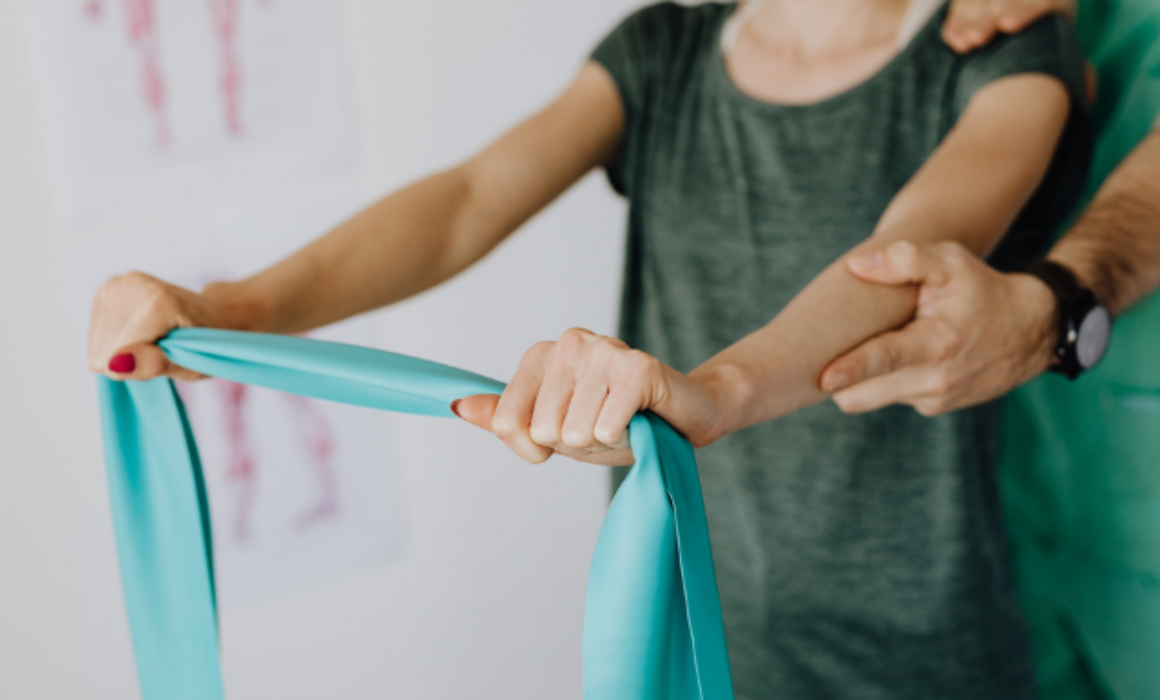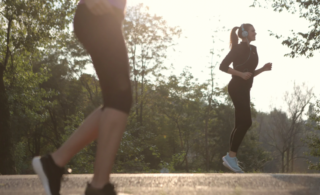
This article explores some of the physical issues you might face following breast cancer surgery and how exercise can help you.
By Rebecca Heath
Physical issues following breast cancer surgery
Going through breast cancer surgery is difficult for many reasons and can have an impact on both your mental and physical health. In this article I focus on how exercise and movement can help you manage the physical side effects following surgery. I’ll take you through what can happen physically, why these issues might arise and how you can deal with them. I’ll also share some post-op advice.
The physical side-effects you experience following breast cancer surgery might include:
- Pain
- Decreased range of movement
- Soft and scar tissue restrictions (a pulling or tight sensation)
- Cording (axillary web syndrome)
- Seroma(s)
- Altered sensation,
- Fatigue
- Decreased strength
These side-effects are all perfectly normal though. Many will either resolve themselves on their own or with some help from physiotherapy. Completing your prescribed exercises and following your post-surgery guidance is integral to your recovery, particularly in preventing side-effects from happening.
It’s also very important to listen to your body throughout any recovery journey. A gentle stretch through any exercise is positive and beneficial but pushing the body into or through pain can prolong the healing process.
A good rule to live by in the initial stages is: if you’re asking ‘Should I be doing this?’, the answer is probably no. Taking this into consideration will help to stop you doing too much to soon.
How does your body heal after surgery?
During any surgery, the moment the scalpel touches the skin the body kick starts an inflammatory response. This is the very start of the healing process and it leads to what’s known as the proliferative stage. This is when the body starts to heal the wound by creating scar tissue to repair the area of trauma.
Scar tissue impacts all the surrounding tissues not just the point where the incision was made. The tissue affected will depend on the type of breast cancer surgery you’ve had. Changes to the surrounding tissues can also cause pain, restriction in movement, cording and a seroma.
How can exercise help you to manage post-surgical issues?
One of the most important aspects to your post-surgical journey is to complete the exercises given to you by your breast care nurse or physiotherapist. These exercises will help you to recover and manage any post-surgical issues.
The Breast Cancer Now: ‘Exercises after breast cancer surgery’ booklet is helpful It will guide you through the early post-surgery stages. The exercises can help you safely progress your movement from the day after surgery until you have full movement back and on through any radiotherapy treatment you may need.
They will help you to increase your range of movement and ultimately enable you to return to previous levels of activity. The exercises will also be useful before, during and after radiotherapy to ensure your shoulder doesn’t become restricted and painful.

Exercise safely
A gentle stretch can be very beneficial but forcing movement through pain isn’t recommended. It can lead to complications such as pain, bruising and worsening of cording.
The type of surgery you have will determine how quickly you progress through the exercises. For example, you may progress at a slower rate if you’ve had a breast reconstruction. The important thing is that your consultant, breast care nurse or physiotherapist.guides you.
There will also be some precautions to follow to help with your recovery. This might include restricting movement of the arm: not lifting your arm higher than 90 degrees for 1-2 weeks (depending on the type of surgery) and not lifting anything heavier than half a kettle of water (approx. 2-3 kg).
What are the symptoms of lymphoedema?
In simple terms lymphoedema isa build-up of lymphatic fluid within in the body’s tissues. Symptoms can include an aching or a heaviness in the arm, difficulty with movement and swelling in the arm. It happens when there is damage or an alteration to the lymphatic system, for example after a Sentinel Lymph Node Biopsy (SLNBx) or an Axillary Node Clearance (ANC).
Lymphoedema is preventable and even following a diagnosis there are various treatments available. One of these is Manual Lymphatic Drainage (MLD). This is a light massage that helps to promote the movement of lymphatic fluid out of swollen limbs by directing it towards functioning lymph nodes. Following a treatment session, you may notice a reduction in the swelling in your hand or arm. For further information on MLD please visit the the Macmillan page on lymphoedema.
How do you manage lymphoedema?
There are a number of steps you can take to manage and treat lymphoedema yourself. This can include wearing a compression garment, regular exercise and having a healthy lifestyle. You can be referred to either a specialist physiotherapist or MLD (Manual Lymphatic Drainage) therapist.

Can you prevent lymphoedema?
You can help to prevent lymphoedema by protecting your skin from infection by doing things like:
- Wearing sun cream
- Avoiding injections taken on the operated side
- Treating cuts or grazes with an antiseptic cream
- Contacting you GP at the first sign of infection for antibiotics
- Wearing gloves for gardening
Other things to be mindful of are avoiding heavy lifting and taking your blood pressure on the effected side.
What is a seroma?
A seroma is a build-up of fluid which can form after surgery. The fluid tends can fill a space where tissue has been removed. They can be painful and feel like a ball of fluid to the touch. Seromas can resolve themselves but occasionally may need some intervention. If you’re concerned or have noticed any signs of a seroma, please speak to one of your medical team.
What is cording?
Cording is found commonly in the axilla (armpit) although it can occur in other areas and extend into the arm. This is often due to lymph node removal and again is part of the inflammatory response to surgery. Cording mostly causes a restriction in movement and can feel like a pulling or tight sensation in the arm; you may also notice cords in the axilla/arm, and these tend to feel like guitar strings. Just to reassure you this is quite common and can be treated by a specialist physiotherapist.
Don’t hesitate to ask for advice
If you find you’re struggling with side effects or have any questions, mention it to a member of your medical team. A referral can be made to a physiotherapist who will carry out an assessment and tailor a treatment plan to suit your individual needs. Treatments might include myofascial release (a form of massage to relieve tightness in the connective tissues), a strengthening and stretching program, postural advice, MLD, education, cord release and exercise advice.

About the author
Rebecca qualified as a physiotherapist 10 years ago and she currently practices at The LOC on Harley Street and The Wellington Hospital in St John’s Wood (North London).
Further information
Future Dreams hold a range of support groups, classes, workshops and events to help you and your carers during your breast cancer diagnosis. These are held both online and in person at the London-based Future Dreams House. To see what’s on offer and to book your place, see here.
To return to the homepage of our Information Hub, click here where you can access helpful information, practical advice, personal stories and more.
Reviewed July 2023
The information and content provided in all guest articles is intended for information and educational purposes only and is not intended to substitute for professional medical advice. It is important that all personalised care decisions should be made by your medical team. Please contact your medical team for advice on anything covered in this article and/or in relation to your personal situation. The content of this article was created by Rebecca Heath and we accept no responsibility for the accuracy or otherwise of the contents of this article. Please note that the guest author of this article has not been paid to write this article. There may be alternative options/products/information available which we encourage you to research when making decisions about treatment and support.The links and/or recommendations in this article to third-party resources are for your information and we take no responsibility for the content contained in those third-party resources. Any product recommendations made in this article are not product endorsements and unless otherwise stated, they are made without any affiliation to the brand of that product. We ask you to note that there may be other similar products available.
Share
Related reads

Support awareness research
Donate to those touched by BREAST cancer
Sylvie and Danielle began Future Dreams with just £100 in 2008. They believed nobody should face breast cancer alone. Their legacy lives on in Future Dreams House. We couldn’t continue to fund support services for those touched by breast cancer, raise awareness of breast cancer and promote early diagnosis and advance research into secondary breast cancer without your help. Please consider partnering with us or making a donation.

